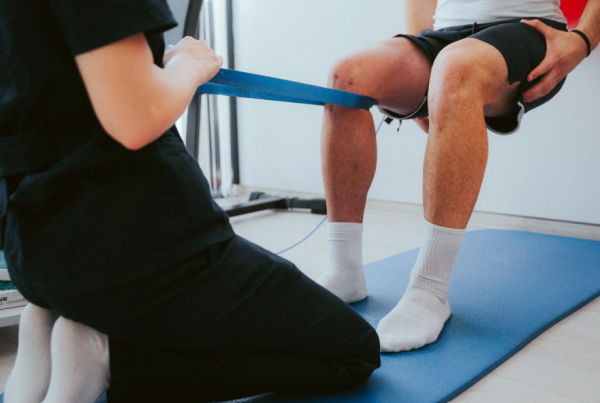Getting useful and relevant information from a GP can sometimes be a difficult task, not as a result of them being a poor practitioner or communicator but usually due to them being one of the most time poor professions out there. With the GP being the second most vital cog in the machine of compensable systems (the most vital being the client and their beliefs) it is imperative to be able to include them in the process of case management and your communication as a rehabilitation provider or insurer. Obviously sitting in front of the GP, with the patient, is going to be the most effective means of drawing out helpful information, however, arranging a case conference may not be possible until a few weeks into the case therefore being able to make a sharp, succinct phone call can be the most effective tool in your arsenal to kick a case off on the right foot.
In my ten odd years of interacting with GPs I’ve found that the below techniques have proven to be the most successful in terms of obtaining information over the phone that’s going to help to move a case forward. As always though, what’s worked for some doesn’t always work for others and communication styles are a highly personal thing so feel free to comment and add any extra tips you’ve had success with in the past. Would love to hear them!!
Time is of the Essence
Keeping front of mind the fact that a GP will always be busy and not keen to take your phone call is always very useful. Sometimes even the statement “I appreciate that you’re very busy so I’ll just take a couple of minutes of your time” can go down like a lead balloon so I like to send a pre-phone call fax which contains all the questions that I want answered, usually no more than 5, and using “yes” and “no” tick boxes as much as possible. If you happen to receive the fax back answered then the bonus is that you’ll be able to expand more in the phone call and get some more detailed info, if they haven’t seen or answered it as yet (the more likely scenario) then you will have a script that you can run through to make the conversation as efficient as possible.
Get Your Priorities Straight
Again remembering that you likely have limited time available make sure that you have the most vital questions answered first. This will mean personalizing your communication and avoiding or modifying templates. GPs get frustrated at including information on the medical certificates only to then have to write it again on a fax or discuss it in a call/conference. For example, if there appears to be a clear diagnosis on the medical documents, i.e. “Grade 2 supraspinatus tendon tear” as opposed to “Right shoulder pain” then leave your “Diagnosis” question out of the communication.
I’ve found that the following are the best pieces of information I can use to really get a rehabilitation process on track from the get go:
– overall rehab goal
– timeframes to reach that goal
– timeframes for the next step in the plan
– current treatment requirements
If these are covered off quickly and the GP is happy to continue then you can start to delve a bit more into the “what if’s” such as, “if that treatment isn’t providing benefit what would you suggest we explore next?” which will mean that if Plan A isn’t working then you know what the Plan B is without having to wait until you can get back in touch with the Doctor to find out where to next.
Timeframes are the Key
With a solid timeframe comes a solid rehabilitation plan. With a black and white timeframe you will be able to write an upgrading program that is clear for everyone to follow, without this the plan has no depth and no accountability and this is when cases become drawn out and any biopsychosocial flags presenting can really take hold and delay progress.
All too often, and especially when the diagnosis is a bit unclear, the GP will find it hard to commit to a timeframe, therefore, asking for commitment to a provisional timeframe such as “to review in 2 weeks to consider a return to work at that time” can be the next best thing or even setting a timeframe to make a timeframe. This allows imaging, assessments with allied health or specialist reviews to take place and the info to be considered in order to allow timeframes to be discussed at the next meeting.
Round Two
Even if I’ve been successful in getting hold of all the information I need to get things going it is inevitable that things will change over the course of the next few weeks (or sometimes days) so scheduling the next communication with the GP is again vitally important. A quick “I’ll give you another call in 2 weeks” lets the GP know that they’re involved in an actual process rather than a one-off communication and they’re going to likely be discussing their timeframes again. Whether this is a sit-down case conference or a follow up phone call is up to the needs of the case but staying in contact with the GP whether things are good or things are bad helps improve the relationship which can prove important when you have to have some of those difficult conversations down the track.
Top 5 tips in Communicating with GPs
- Send a pre-phone call fax
- Personalise and prioritise no more than 5 questions
- Getting / setting clear timeframes is a must-do
- Cover off the what-ifs for a solid Plan B
- Set a time for the next communication
Would love to hear some other techniques that have proved successful when interacting with GPs. Feel free to comment below and let us know what your Top 5 are.


